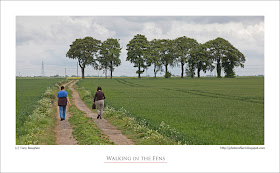click photo to enlarge
Although I was raised in Settle, North Yorkshire, and spent my childhood and youth exploring the mountains, hills and valleys of that area, until the other day I'd never seen the Hoffmann Kiln at Langcliffe. When I lived in the Dales the quarry at Giggleswick was in full production, turning out, as I recall, lime and crushed stone. The quarries of Helwith Bridge and Horton in Ribblesdale were also, as they still are, a major source of stone. Langcliffe Quarry, however, was a spent force, hidden behind its perimeter fences. In fact, to the casual observer it looked something like a massive, crumbling cliff, such was the effect that time, weather and colonising vegetation had wrought on its sheer faces. As a child and youth I was aware that it had a productive past, and I knew that some of the buildings associated with the production of lime still existed below its cliffs, but access to them wasn't possible or encouraged. In recent years this location has been used for refuse disposal and recycling. But, with changing times come changing attitudes to an area's heritage, and today access is allowed to the remains of this once thriving location of production by the Craven Lime Company.The star attraction at the centre of crumbling buildings, inclined planes, water tunnels, wheel mountings etc. is the massive Hoffmann Kiln. This structure, built in 1873, is where limestone was, over a period of several weeks, reduced to the lime that found uses in "sweetening" acidic soil, paper making, steel manufacture, sugar refining, the making of chocolate and much more. The huge continuous oval, stone on the outside, fire bricks inside, with 22 individual burning chambers, now resembles a Piranesian vision, something that the Romans might have left behind. Inside the kiln is vaulted and its sloping exterior is pierced by arched openings that throw pools of light into the darkness. The tall chimney that allowed the hot gases and smoke to exit the kiln has long gone, but what remains is fascinating, and well worth a visit.
I took several photographs of the kiln. The two I show here best illustrate the structure, with the main image showing the interior of part of one of the long sides of the kiln.
photograph and text (c) T. Boughen
Camera: Canon
Mode: Aperture Priority
Focal Length: 40mm
F No: f7.1
Shutter Speed: 1/8
ISO: 3200
Exposure Compensation: -1.0 EV
Image Stabilisation: On
























